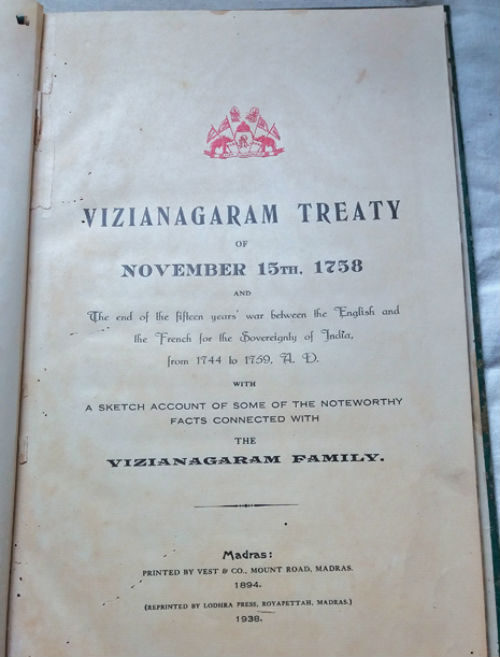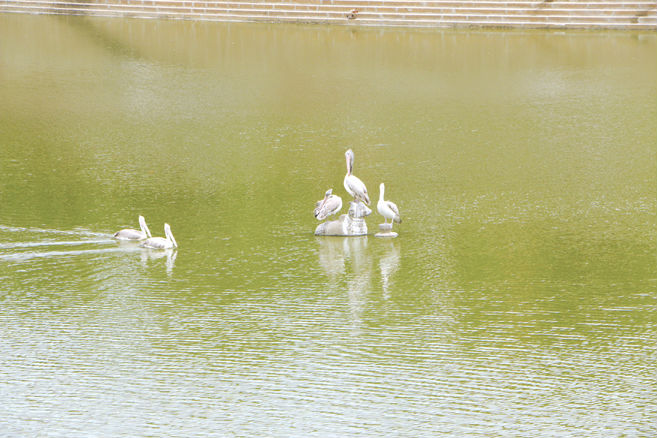Registered with the Registrar of Newspapers for India under R.N.I 53640/91
Vol. XXVII No. 12, October 1-15, 2017
Archives: Vol. XXVII No. 12, October 1-15, 2017
Giant tower to disfigure a heritage skyline?
By The Editor
For years, Central Station, along with its neighbours, the Southern Railway headquarters, the VP Hall and Ripon Building, was a landmark of our city, a part of a handsome skyline, visible all along that stretch of Poonamallee High Road. But that joy may not be ours for much longer. Chennai Metrorail Limited (CMRL) now plans a 33-storey commercial structure just opposite, on land that it acquired from the Raja Sir Savalai Ramaswami Mudaliar Choultry. With this what ought to qualify as a heritage area will have a monstrosity sticking out like a sore thumb. Not that such considerations are going to weigh much with the CMRL.
For the past few years, Chennai Metrorail has paid scant attention to damage that it has caused to heritage structures in the city. The list is long and has been carried so many times in Madras Musings it does not bear repetition. Suffice it to say that in most cases, CMRL has chosen to undertake drilling activities in close proximity to heritage structures despite warnings from experts. And there have been significant damages. Each time such damages have been reported, these have been brushed aside stating that such occurrences need to be borne with resignation for the sake of development. That is strictly not an argument that can hold water. Development necessarily has to carry with it the interests of all stakeholders and heritage too happens to be one.
CMRL will now have to embark on getting approvals from many agencies and that includes the Airports Authority as a building of such a height does not exist in the city. More importantly, it will have to seek a go-ahead from the Heritage Conservation Committee of the Chennai Metropolitan Development Authority (CMDA). This body, not exactly known for its dynamism, will have to view the request in the light of the High Court’s judgement that, based on the Padmanabhan Committee report, clearly forbids blocking of heritage structures with permanent or temporary constructions. A 33-storey building will undoubtedly do just that. But will the HCC of the CMDA take a hard look at the proposal? Peopled as it is by just personnel from Government departments and ministries, it is quite likely that the Committee will yield to pressure. It has been known for flexibility in that respect, always in detriment to heritage.
As to what CMRL wants with such a monstrosity in such a crowded area is possibly clear only to those working within it. Does a metro service really need such a large administrative building? Moreover, parts of it are to be leased out for commercial development as well. This happens to be one of the most congested parts of the city. Such a large building, with its attendant footprint, will only add to the chaos. Emergency measures, not something for which Chennai is best known, will have to be doubly stringent here.
The land in question was acquired after some litigation from the Raja Sir Savalai Ramaswami Mudaliar Choultry. At the time of the verdict, CMRL had committed that it would preserve the Choultry in its entirety. That is now open to question too. How can a single storey structure ‘survive’ if it is to be dwarfed entirely by a 33storey building? Will it even be visible?
Speedy completion of Metro necessary for benefits to be seen
by A Cost Analyst
Experience across the world has shown that introduction of a mass rapid transit system can relieve traffic congestion, discourage residential crowding, lessen pollution and widen work opportunities. Chennai too naturally hopes that the Metro would not only make our City look modern, but also more liveable.
For now, just 28 km of Phase One’s 45 km is in use. The experience of this stretch is not enough to estimate the Metro’s impact on completion of the full project. But it is useful as a pilot model to test fare structure and related strategies to achieve high capacity utilisation.
The uppermost aim must be to encourage mass usage. High capacity utilisation is necessary for financial viability and for reaping larger socioeconomic benefits. The absence of an initial surge of commuters taking this mode of travel is disappointing. A 4-bogie train had less than 20 per cent occupancy at about 11:15 hours on a Monday when there was heavy traffic on the roads. Enquiries indicated peak traffic was not substantially larger. Looking down from this elevated train showed that there was, right under the Metro line, a seething traffic of cars, autos and two-wheelers. Erroneous understanding of “off-peak” hours obscures recognition of real factors that impede higher occupancy and leads to meek acceptance of unsatisfactory situations as being inevitable.
Garbage bin a landmark
The garbage bin at my street corner is of great concern to me.
Every time I step out of home, it confronts me. And I feel depressed. So depressed that my head spins like the wheels of this garbage bin.
One recent evening, I walked down to the corner to wait for a friend who was picking me up for coffee and conversation.
To Ola drivers, auto drivers, friends who come by and strangers, besides the cooking gas cylinder delivery man, this bin is a landmark. There is a giant Metrowater tank around, but it’s too far. There is actor Vijay’s office, but it is on Level 3. So the bin is a convenient landmark.
More so since it is always pushed to the side of the road even though the Ramky staff push it into its corner after emptying it every morning.
On another evening, after a nice shower I was standing close to the bin when I heard some strange noises. Then two bags rolled out. I was a tad nervous now.
Perhaps giant rodents? I dreaded the thought.
Already, the rats had been taking it out on the shoots of my dear thulasi plant and all the while we thought it was dying of some ill-omen.
There were more noises from the other side of the garbage bin. Then I saw two cows. They were tearing apart these large plastic bags and seeking stuff to masticate for their evening tiffin.
The Vizianagaram Royals
 My grandfather, Dr. K.N. Kesari (1875-1953), was a friend of the princely Vizianagaram family and the printing press that he set up in the 1920s, Lodhra Press, was involved in reprinting a report in 1938 that was originally compiled in 1894 and went by the tortuous title: “Vizianagarm Treaty of November 15th 1758 and the end of the fifteen years’ war between the English and the French for the Sovereignty of India, from 1744 to 1759 , A.D. with a sketch account of the noteworthy facts connected with the Vizianagarm Family”.
My grandfather, Dr. K.N. Kesari (1875-1953), was a friend of the princely Vizianagaram family and the printing press that he set up in the 1920s, Lodhra Press, was involved in reprinting a report in 1938 that was originally compiled in 1894 and went by the tortuous title: “Vizianagarm Treaty of November 15th 1758 and the end of the fifteen years’ war between the English and the French for the Sovereignty of India, from 1744 to 1759 , A.D. with a sketch account of the noteworthy facts connected with the Vizianagarm Family”.
I send herewith images of the title page, preface, the last page of the main text and an appendix giving a brief history of the Vizianagaram Family.


